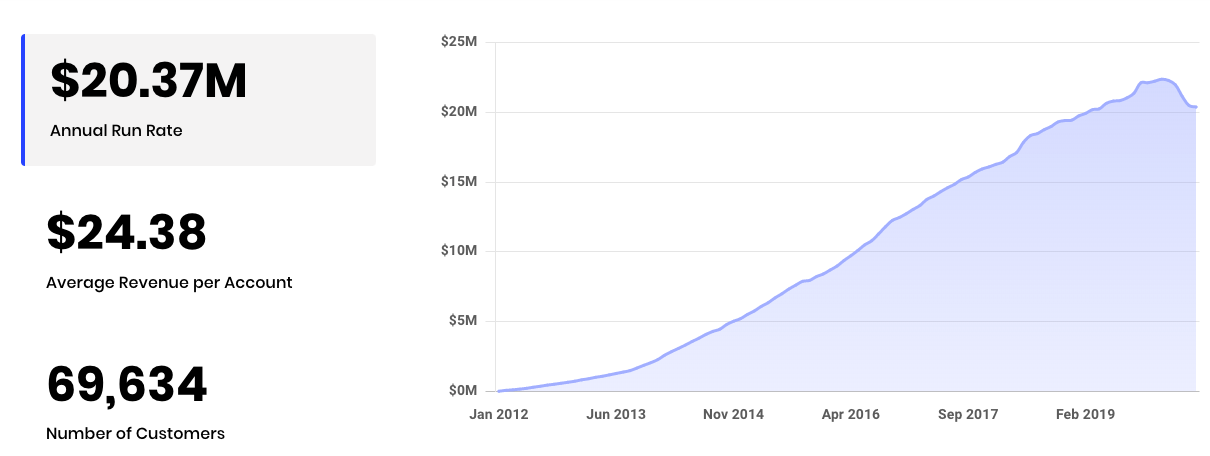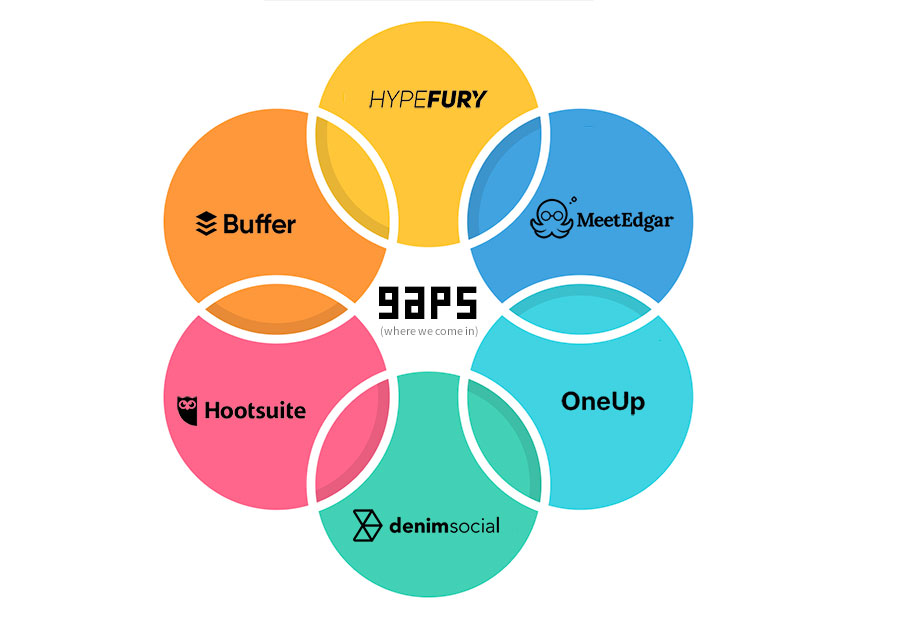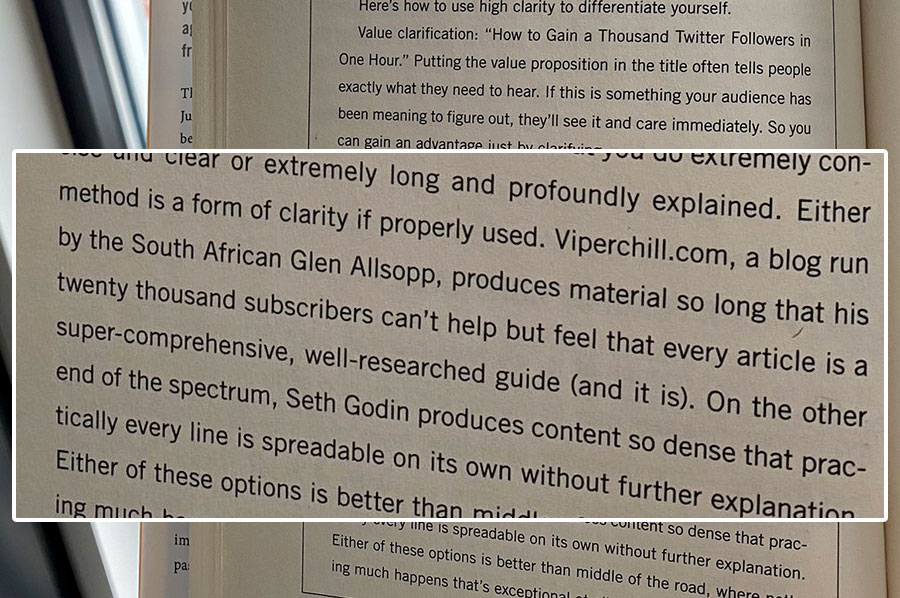Thanks to 16 years of building our own online businesses to working with 7, 8, 9 and even 10-figure brands through our SEO agency (Detailed.com), Gaps follows a clear philosophy on how to increase your chances of building a profitable digital empire.
I like to get to the point, so here’s our simple approach to more consistent success: Model what is clearly financially successful for others, and leave your own mark on the space.
Or written another way…
Don’t be first to market ($100K in 18 months vs $100K in 24 hours)
While you may still spend money on the first company to introduce cornflakes to the world (Kellogg’s), you don’t use the first search engine, internet browser, CRM suite, email provider, dating app or blogging platform.
You didn’t discover this website on the first social network. Nor will I ask for your email address via the first email marketing service.
The people who pave the way for us are the pioneers and should be respected as such, but the digital brands you actually frequent today likely aren’t those same pioneers.
Granted, there is often a lot of money to be made by being the first to a market — providing you create something people actually want.
The downside to being first however is that you typically have to expend a large number of resources in educating your market about what you actually do.
Early versions of Amazon.com had to educate customers that when you click a button which says ‘Add to Cart’, it doesn’t mean you have to buy something.
You can actually change your mind later before you pay.
Today we know that’s obvious, but it wasn’t always the case.

Amazon helped pave the way, partly due to showing millions of new online shoppers the nice little hint in parentheses (above).
When pioneers have educated a market, the next blogging platform, search engine, browser and email client could simply say what they were, rather than explaining what they do.
Google’s launch of Gmail back in 2007 didn’t try to convince you of the benefits of email. Others had done that legwork many years prior.
They built upon popular offerings with a faster user experience, threaded conversations, more free storage than anyone else, and an invite-only campaign that helped earaly users feel like they had access to something special.
Less than 10% of the time do the pioneering innovators become the big winners in the end.
What differentiated the winners was the ability to turn a success into a sustainable flywheel. Even if they started out from behind.”
– Jim Collins, FROM GOOD TO GREAT
In the world of SEO, I’ve had one product with a brand new idea hit the six-figure mark in 18 months, while another with hundreds of competitors before me hit that same number in a 24 hour period.
Whenever I’ve spent the most time and money on online projects that never went anywhere, it’s because I tried to be first to market with a radically new idea and had to spend all of my time on educating, rather than selling.
I’ll be sharing my personal SEO example in a ton of detail in a future Gaps update (subscribe? — it’s free) but there are many specific instances on this very page.
A $100m exception: The Gaps report that made millionaires
The thing you’re going to see me stress in a lot of Gaps reports is that there are always exceptions to any ‘rules’ about what it takes to succeed online.
Your website needs to be beautiful to stand out? Look at Craigslist.
You need investors and a big team to make millions? In our database there are teams of one pulling in millions annually.
Our ‘rules’ and philosophy here at Gaps will have exceptions as well – we just primarily focus on the path we believe will result in more success stories.
Back in 2014 (we’ve being doing this a while) I wrote about a website that had reached 100 million visitors in its first six months of existing.
It was an in-depth report of a website, Viral Nova, who were taking over Facebook with clickbait headlines which left you wanting more of the story.

I finished my analysis with the headline, “Want In? Two Reasons You Must Act Now“.
I would later go on to write two more reports on the angle – each sharing more success stories – before having my coverage picked up on Bloomberg.

My reporting on the topic, sharing the gaps in the market people could enter with, resulted in multiple people telling me they made 7-figures thanks to my prompting (and many more making only a little bit less).

The site, which took advantage of Facebook’s propensity to reward clickbait headlines with millions of news feed views later sold for $100M.
To my knowledge, no other site did those revenue numbers. There was certainly a huge financial benefit in being first to capitalise on the opportunity.
Still, Viral Nova founder Scott DeLong (who I was able to interview before his 9-figure exit), was the one who had to figure it out. He didn’t have anyone to copy. He was the pioneer that made all of the others possible.
He realised Facebook’s algorithm was rewarding clickbait content.
He published story after story – sometimes dozens per day – to take advantage of what he knew was working.
He tested different monetisation methods to get the most out of his new influx of traffic.
And he managed to convince someone the brand was worth $100M before the traffic tsunami died down.
So, yes, there are exceptions.
Just the people who came a little later had an easier ride, with far less guessing, and many went on to have life-changing results.
‘Social media scheduling’ won’t become the top story on Google Trends, but someone will make millions with the next success story
As I write this page, there’s growing interest in tools built around Google Trends (and similar sources) to see what is ‘hot’ in the world right now.
They can be incredible for keyword research and finding new products to promote, but if you rely solely on them, I think you can miss some incredible online business opportunities.
Some incredible Gaps in the market.
Scheduling social media posts is still the core selling angle on the homepage of HootSuite, a company that generated more than $150m in revenue from over 16 million users in 2018.
Three years after Hootsuite’s 2008 launch, Buffer.com (then BufferApp.com) made its appearance on the world wide web.
They too launched a social media scheduling Saas for Instagram, Twitter and Facebook that now does more than $20M in annual revenue.

As a disclosure, Buffer were a client of our SEO agency, but that’s not why we’re covering them.
We’re covering them because people are constantly building profitable competitors, even though Hootsuite and Buffer are established, well-known brands with much larger marketing budgets.
Three years after Buffer’s launch, savvy entrepreneur Laura Roeder unveiled Edgar – a similar social media scheduling tool – and grew it to $150,000/m in just over a year.
The most recent reports from Laura state the business is doing more than $4m per year now.
So you’ve got Hootsuite doing $150M. Buffer doing $20M. Edgar doing $4m. All essentially offering a very similar service.
If people are still entering the space and making impressive revenue numbers, our philosophy is that we see room for more — especially if you can put your own mark on the space.
To cement that idea, in 2019 Davis Bear started OneUp and built it to $120,000 in annual recurring revenue in its first 10 months.

In 2020, Yannick Veys is growing HypeFury, where is quickly heading to six-figures in annual revenue.

So here’s the point I’m trying to make: If you’re waiting for Google Trends to give you a signal that ‘social media scheduling tools’ are hot, you’re going to be waiting for a very long time.
Instead, here at Gaps, we analyse businesses that are thriving in the same space – proving product/market fit – that you can then put your own spin on.
Once you’ve found an angle to model that you like and believe in, you can differentiate yourself by doing things like:
- Focusing on just one part of the offering (Hypefury currently only offers scheduling for Twitter)
- Build out pages for customers in other languages (Hootsuite has many international site versions)
- Compete with better content (there are 10 search results, after all)
- Differentiate your pricing (OneUp is cheaper than Buffer and Hootsuite)
- Spin it towards a different industry e.g. social media scheduling for government sectors, with regulatory compliance checks built in
That last bullet point might sound like it’s a bit too niche, but Denim Social raised $4M for a social media scheduling tool to do exactly that.
The gaps come when an industry has already proven there’s a need for what someone is offering. Or in visual form…

Find something that is already proven to be a need and a successful business angle and put your own spin on it, rather than spending months educating the market to a brand new idea that people might have no interest in.
Oh, and as you might have started thinking about already: You can use the proven success of others to reverse-engineer how they’re marketing themselves and getting customers, to get an idea of what channels you’ll likely want to focus on yourself.
It gets pretty exciting when you’re excited about the niche and aren’t worried whether people would actually buy something.
At Gaps we’ll cover hundreds of successful niches to model, but here’s one more
In 2015, native Russ Perry launched a graphic-design business named Design Pickle.
The concept was revolutionary at the time: Pay a flat monthly fee and their designers will perform as much monthly design work as you can throw at them.
Now generating more than $10M in annual revenue and completing thousands of projects per week, the idea was clearly a success.
It didn’t come without a ton of customer-side education though, with potential users constantly asking questions like, “What does unlimited truly mean?” and “How quick can I expect to get my designs back?”.
And while the business grew quickly, it took a lot of marketing creativity to get noticed.
One of his most famous marketing tactics was walking around a marketing conference handing out pickles from an ice cream cart (nobody wants warm pickles, after all). And if that didn’t make him stand out enough, he was dressed as pickle while doing it.
Today, unlimited services for a flat fee can be found in dozens of different niches.
Russ’s quick and public success meant a lot of others modelled his offering.
One such similar offering is DesignJoy, which scaled their revenues past $300,000 in 2020.

Their twist on Design Pickle’s success is that their prices actually start at a higher fee, but they also include more enterprise-friendly offerings, such as offering frontend development work via the Webflow platform.
Robin Vander Hayden’s ManyPixels is based on the eaxct same model: Unlimited design work. One flat monthly fee.
The service pulls in an impressive $50,000+ per month from over 100 customers, with Robin regularly sharing updates on Twitter.
One person was able to come out of the gate with a fresh take that educated market, and others were able to replicate that success by modelling what has already proven to work for someone else.
Gaps is our attempt at a gap in a market with multi-million (and multi-billion) dollar brands
Gaps is our gap.
Our mission is simple: Can we model and improve upon huge brands who cover funding rounds, exits and online success stories.
Brands like TechCrunch, Bloomberg and Business Insider.
All with the aim to hep our readers build more profitable and remarkable online brands.
Some ways we aim to add our own spin include:
- Building multiple online projects ourselves and sharing our results
- Covering niches (like the SEO industry) in insane detail, rather than just one brand at a time
- Doing creative deep-dives on specific platforms, like who is making the most money on Patreon
- Sharing proven gaps in the market that you can personally capitalise on
We have a few more ideas up our sleeve, but that last bullet point is definitely a priority.
It’s what we’re known for, and we have countless success stories because of it.
Finally, here’s my promise to you.
I haven’t written a book before, though I’m truly honored to have been mentioned in some.
New York Times best-sellers Julien Smith and Chris Brogan once wrote about me alongside my marketing idol, Seth Godin, which was an incredible surprise.
Here’s what they wrote:

Side note: If you’re new here, ViperChill was the first only brand I built at 15 years old (and I’m not South African, though living there for a long time did destroy my Geordie accent).
I promise to continue with my in-depth approach.
When I cover a niche in playbook format, I’ll not only constantly add new success stories to keep you inspired (see our ‘database box’ on /latest), but also go into so much detail you’ll save dozens of hours of research.
You also won’t be left wondering: “OK, this is a cool niche. What now?”.
This is pretty much how I’ve always done things, but one quote that keeps me on that path is from Kathy Sierra’s book, Badass:
You have the chance to raise the bar on what it means to care about users as people with lives. Complicated, resource-draining lives. – Kathy Sierra
I’m acutely aware your time is limited, and there are a lot of people vying for your attention in the world of making money on the internet.
When you’re interested in entering a new space or researching one you’re already in, you’ll know that I’ve given it my all – and truly believe in the opportunity – before I hit publish.
Here’s to creating some more successful predictions.








 For over a decade we've been sharing some of the best niche ideas on the web.
For over a decade we've been sharing some of the best niche ideas on the web.

